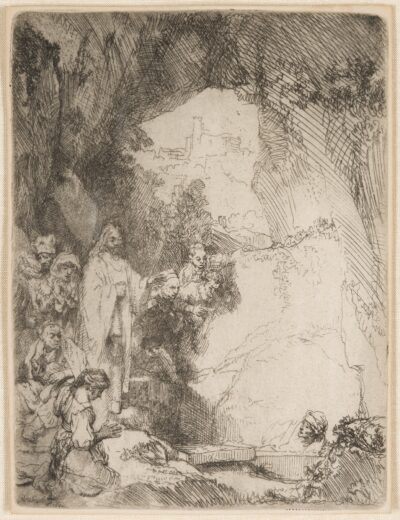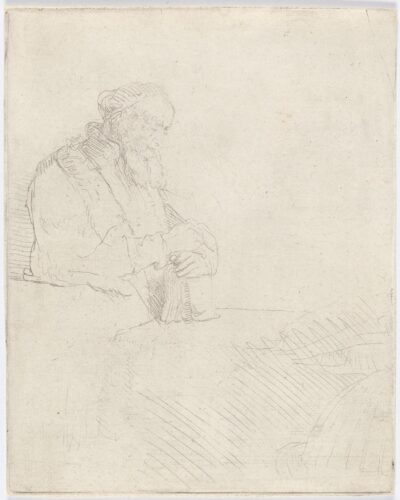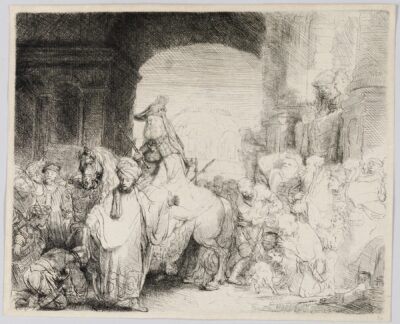Cottages and Farm Buildings with a Man Sketching
Rembrandt Van Rijn
Cottages and Farm Buildings with a Man Sketching
etching
c. 1641
An original Rembrandt Van Rijn etching.
c. 1641
Original etching printed in black ink on laid paper.
A superb 17th century/lifetime impression of Bartsch, Usticke and New Hollstein’s only state, of this delicately bitten etching (characterized by G.W. Nowell-Usticke in his 1967 catalogue Rembrandt’s Etchings: States and Values, as “rather uncommon”), showing the fine vertical scratches in the sky characteristic of early impressions.
Catalog: Bartsch 219; Hind 213; Biorklund-Barnard 45-2; Usticke 219; New Hollstein 201.
In 1775 this landscape was still rather neutrally referred to as “Een Boere-Buitehuis, met een zittend Mannetje by eenig Vee op de Voorgrond” (A Farm Cottage, with a seated Man by some Cattle in the Foreground), but in 1810 it was described in the way still popular today as “Het Landscahp, met den Teekenaar” (Landscape with a Man Sketching). The figure referred to in this title is at work in the foreground at the right, with a large hat on his head. The motif of an artist in a landscape goes back to the fifteenth century, and turns up the in the 1640’s in other landscapes by Rembrandt, such as “The Three Trees” (Bartsch 212). The farmhouse that the man in this print is drawing has been identified by Boudewijn Bakker as a so-called “Langhuisstolp” or cheese-cover farmhouse, a type of dwelling that was common around Amsterdam. This specific building had a wing with a cellar and an “opkamer” (upstairs room) at the far end of the longhouse section behind the brick wall. This indicates that the farmhouse had been built for the production of butter, but the use of this expensive building material also suggests that the farmhouse was not far from the Amstel, which was used for the shipment of bricks by the clay industry further south. The sailing boats that can be seen in the distance to the right beyond the farmhouse create the impression that there is a wide waterway there.
No preliminary drawing for this etching is known. In 1983 Peter Schatborn placed the etching in a small group of landscape prints that Rembrandt set down on the etching plate straight from nature because of its drawing-like quality. The scene is completely etched and may well have been bitten out in one step. The work belongs to Rembrandt’s first group of landscape prints with a detailed motif in the foreground.




